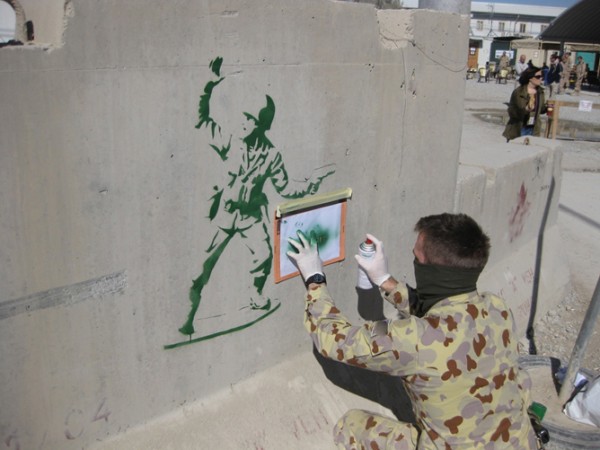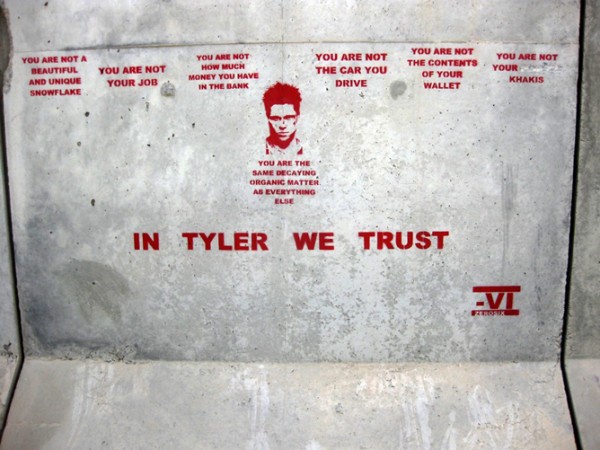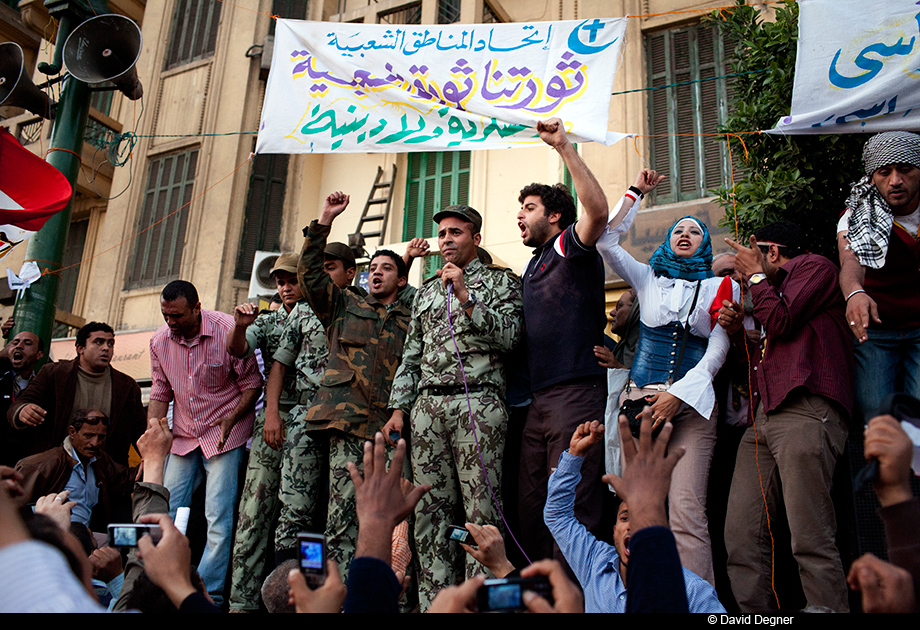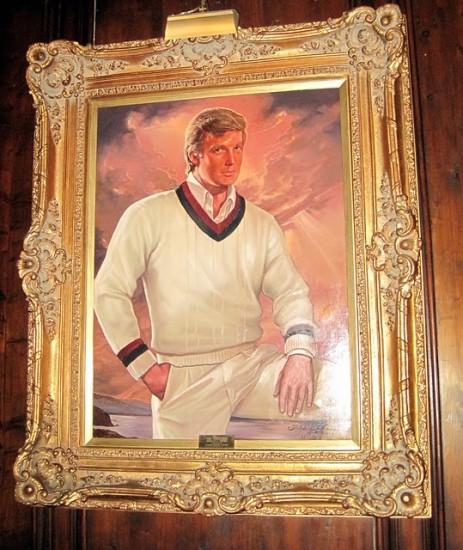Notes
Soldier-Taggers: Afghanistan as Fight Club
“Street art” is generally regarded by the art world as an oxymoron. Together with outsider art, it rarely makes it into the pages of art history or onto the (interior) walls of art museums. Its in-your-face subversive mode rarely coincides with the esoteric trajectory of the avant-garde. Street art depends for its impact on its capacity to disrupt the order and values of everyday life.
Everyday life at the Kandahar base is another thing altogether. The KAF base is a massive fortress housing a changing population of approximately 30,000 NATO and OEF (ISAF) personnel at any one time. In a climate with only two seasons (hot with dust, or deep-frozen mud), this bleak urban environment is a constant reminder of the risks incurred on both sides of the wall on a daily basis.
Yet it has evolved its own village-like atmosphere with a boardwalk and fast food franchises. This incongruous environment was criticised last year by the “notoriously sober” General Stanley McChrystal, in his characteristically acerbic mode: “this is a war zone – not an amusement park.” And so he ordered the closure of the fast-food outlets. This was a hugely unpopular decision, since reversed. So it’s not so surprising that in any community of this size you will find at least a couple of artists. And yet, surrounded by Hesco barriers and concrete blast walls, this is as far from Banksy’s cosmopolitan world as you can go.
Here we’re introduced to the artist ZEROSIX, whose imagery is characterized by quirky and deadpan quotation, in both image and text. Who, by the judgement of his colleagues, is truly badass.
The most overtly provocative of his works is In Tyler We Trust, which is derived from David Fincher’s 1999 film Fight Club, which in turn was based on a 1996 novel by Chuck Palahniuk. The author’s creation of the two-person character Tyler Durden allows for a kind of anxious social dialectic which, it is claimed, personifies the priorities of the nineties generation. In the film, Tyler-the-projection is played by Brad Pitt, who is depicted by the artist pronouncing “you are the same decaying organic matter as everything else.” Tyler is also ambiguously the nameless narrator of the film, and now that his words are inscribed on this blast barrier in Kandahar, so ZEROSIX is narrating his experience of Afghanistan.
Fight Club is a film that couldn’t have been made post 9/11. Fincher makes no claims for Tyler’s “beliefs” or the radical agenda of franchised urban terrorism – which presciently evolves into a Mayhem Project to match the film’s mainstream politicians’ Hope Project. While Fincher claims “[the] movie couldn’t be further from offering any kind of solution”, places like the Kandahar base only exist as a consequence of the post 9/11 and post-global financial crisis Fight Club seems to predict. The work of the street artist ZEROSIX now revisits Tyler’s values on the concrete walls of this radically more challenging urban context. Apparently his work is a trigger for much debate.
(photos: undisclosed. Post adapted from Iconophilia. See more examples of ZEROSIX’ Kandahar street art there.)




Reactions
Comments Powered by Disqus